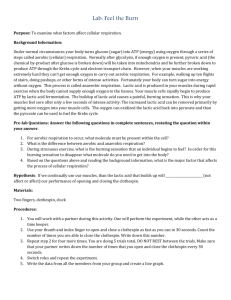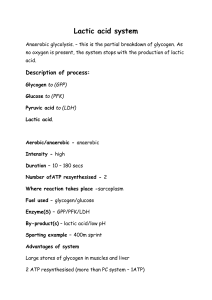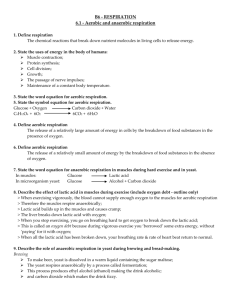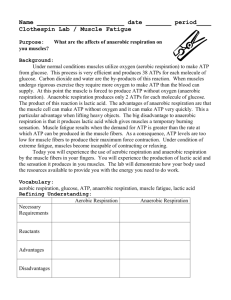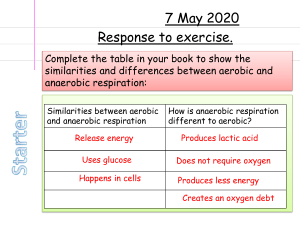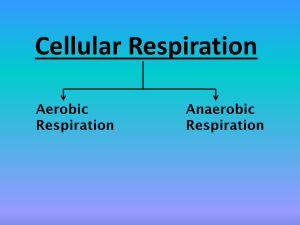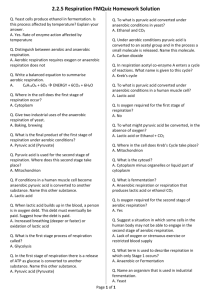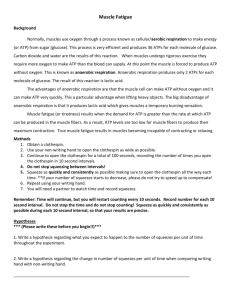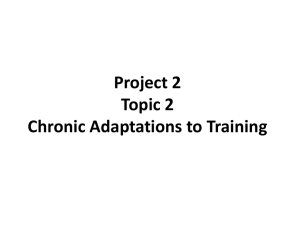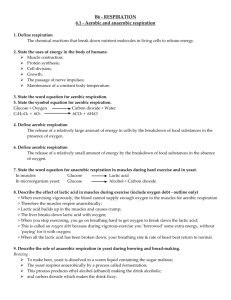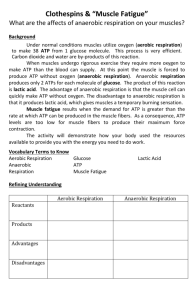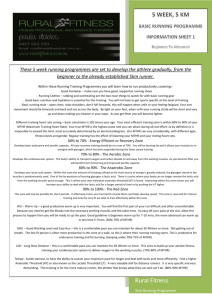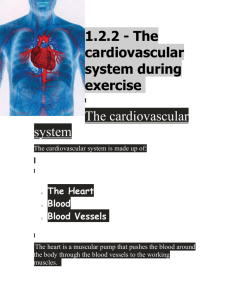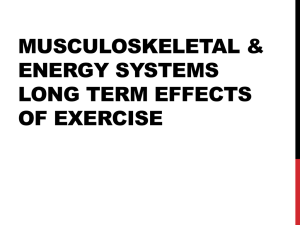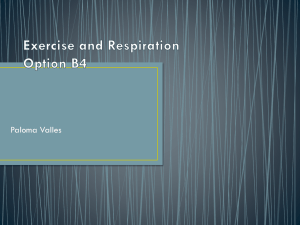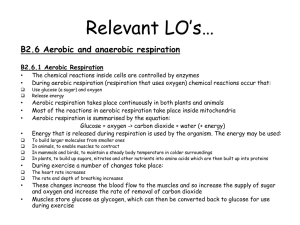the effects of exercise on the circulatory and respiratory systems
advertisement
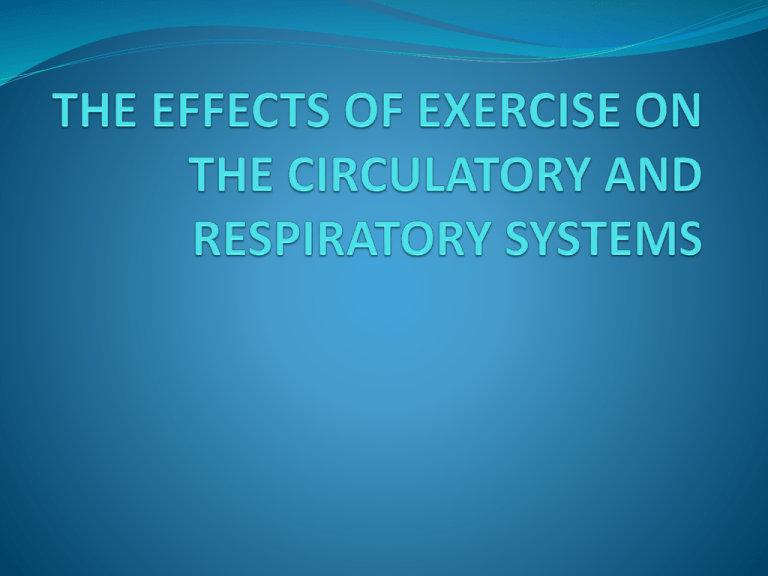
Changes to the Circulatory System Stronger heart muscle Increased cardiac output Increased stroke volume Lower resting heart rate Increased capilliarisation Changes to the Respiratory System More efficient gaseous exchange Increased tidal volume Increased vital capacity Better oxygen debt tolerance Cell Respiration In order to exercise we need energy. Cells get energy from glucose in a process called cell respiration. Two kinds of cell respiration go on in your muscle fibres. AEROBIC RESPIRATION & ANAEROBIC RESPIRATION Cell respiration during exercise. Your muscles usually get their energy from AEROBIC respiration, e.g jogging, swimming, cycling. glucose + oxygen = ENERGY + carbon dioxide + water Cell respiration during exercise. However, our muscles sometimes need large amounts of energy very quickly, e.g when sprinting, therefore ANAEROBIC respiration takes over. Glucose = ENERGY + lactic acid Cell respiration during exercise. Glucose has to be broken down for it to be used by the muscles. The glucose which has been stored (from food) in the muscles and liver as glycogen is broken down and ATP and pyruvic acid is formed. When there is oxygen the pyruvic acid is changed into carbon dioxide and water. Without enough oxygen the pyruvic acid changes into lactic acid Lactic acid and oxygen debt. After strenuous exercise like sprinting, your muscles need extra oxygen quickly. This extra oxygen is called the OXYGEN DEBT. You will pay it off by gulping air into your lungs Most of the lactic acid gets turned into carbon dioxide and water. Some is changed back into glucose and oxygen. Energy systems used during exercise - ANAEROBIC The CP system The ATP that is broken down by the muscle contracting can be reformed in the presence of creatine phosphate (CP) which is also stored in muscles. If there is enough CP then muscle contractions can take place even though there is no oxygen. This anaerobic system is used by sprinters and throwers. It is used whenever a large effort is needed for a short time. CP stores are used up in about 5-10 seconds. e.g. 100m sprint, sprinting down the wing in football Energy systems used during exercise - ANAEROBIC The Lactic Acid System Pyruvic acid changes into lactic acid that collects in the muscles that are working as well as overflowing to the bloodstream. Lactic Acid makes muscle contractions difficult and causes tiredness. If there is too much the muscles won’t work at all. This anaerobic system is used by athletes who work as hard as possible for up to 2 minutes. After this the body goes into oxygen debt. e.g. 400m sprint, running back to defend the goal in hockey Energy systems used during exercise - AEROBIC The Aerobic System If there is enough oxygen and glucose available then you can continue to work on a less explosive exercise almost continuously. This time the pyruvic acid is turned immediately into carbon dioxide and water because there is enough oxygen available. This aerobic system is important during longer activities e.g. running/jogging, cycling, swimming e.g. marathon, jogging from place to place in rugby Energy systems used during exercise Although some sportspeople use one system more than the other many depend on 2 or more when taking part in sports. Q – choose a team game and show where the different systems are used for different tasks during a match Recovery After Exercise After a training session or playing a game your body needs to return to a normal state. This is called recovery. It takes some time for your body to recover. Recovery – Heart Rate The heart rate slows down to its normal resting rate. The fitter you are the faster this happens. Recovery – Lactic Acid Removal Lactic acid will have been produced in the muscles and you will need to get rid of it. Oxygen removes lactic acid from the body. This is called repaying the oxygen debt. The body normally breathes deeper and faster to do this. The process is faster if you do a cool down Recovery – Muscle Repair Muscles may suffer minor damage during training. Exercise may cause microscopic tears in muscle fibres. Your body has to repair this. Stiffness and soreness take time to clear. Stretching as part of a cool down helps prevent stiffness. Recovery – Replacing Glycogen The glycogen stores in the muscles get used up during exercise. The store in the liver may also get depleted. It takes time to replace glycogen. A starchy snack e.g. a banana, pasta after exercise will help. After prolonged exercise such as marathon running it can take 48 hours for glycogen stores to recover. Recovery – How long does it take? This depends on : How strenuous the exercise was Your fitness. The fitter you are the faster you recover. Allow 24-48 hours between training sessions for recovery in the early stages of training. If you train every day, follow a heavy session one day with a light session the next. Even during heavy training, take one rest day a week.



